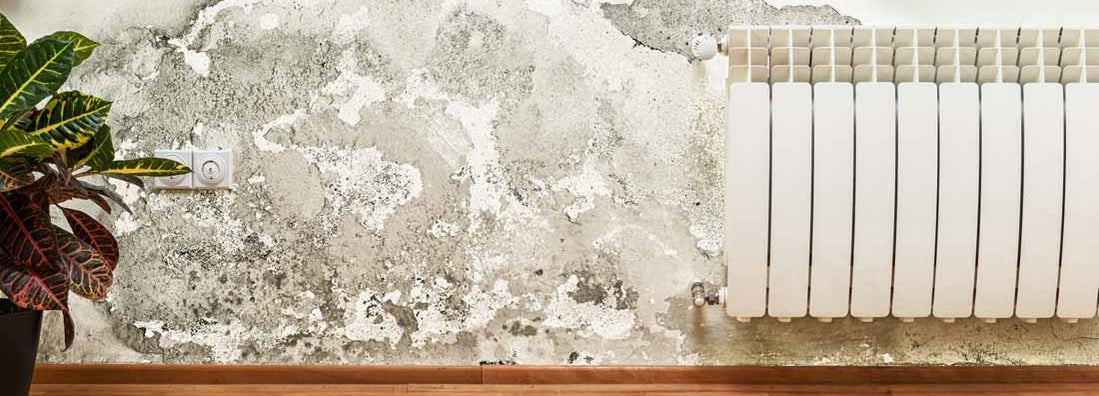Mold Insurance
An insurance expert answers if homeowners insurance covers mold damage and more.

Paul Martin is the Director of Education and Development for Myron Steves, one of the largest, most respected insurance wholesalers in the southern U.S.

Home ownership brings many new responsibilities with it. Suddenly, you’re concerned about things like carbon monoxide detectors, mold and mildew, and homeowners insurance. If you live in a damp climate or one that tends to have humid summers, you may be wondering if your home coverage provides protection from mold.
Fortunately, an independent insurance agent can help you get set up with all the coverage you need for your home against mold and related damage. We also asked our resident insurance expert to answer a few of your most commonly asked questions about mold and home insurance. Let's clear up any confusion you may have about coverage against mold damage.
Are Some Homes More Prone to Mold?
Certain homes are more susceptible to mold than others. One contributing factor is the age of your home. Homes built in the past 30 years are more energy-efficient but don’t “breathe” as well as older homes, increasing the risk of mold. Recently, however, builders began using mold-resistant wood, drywall, and paint to help prevent its growth.
Another contributing factor to mold is your home's location. If you live in a humid climate, your home is more prone to mold. Southern states with very humid climates such as Texas, California, and Florida often have high-profile mold cases.
Is There Such a Thing as Mold Insurance?
Technically, there is no separate mold insurance policy that offers you protection. Your homeowners insurance policy may cover mold in certain circumstances. If you have flood insurance, and the mold is due to flooding, your policy may cover the professional removal of mold. In addition, some home insurance companies offer riders that provide mold coverage on your homeowners policy. An independent insurance agent can help ensure that you have the right kind of protection for your home against mold.
When Mold Is Covered and When It's Not
You may have heard a horror story from a friend, neighbor, or family member who had to deal with a case of toxic mold. A discovery like this can turn into an expensive mold remediation process and a battle to have your home insurance claim covered. Not all mold-related insurance claims are denied automatically.
One key to determining whether your claim will be covered is the source of the mold. If the mold occurs because of a sudden event like a burst pipe that led to water damage, the claim may be covered. But if the mold is due to neglected maintenance, seepage, or long-term exposure to humidity, your mold claim will most likely be denied.
How and When to File Mold Claims
Even if you take many precautions to prevent it, you may find yourself with a mold problem. In addition to managing the mold remediation process, you may want to file a claim with your insurance company. Consider the following tips below when filing your claim:
- Contact your independent insurance agent first to inquire about any wording in your home insurance policy regarding mold and keep copies of all correspondence.
- Review your home insurance policy, paying close attention to any exclusions and proof of claim.
- Don’t throw away any damaged property; take photos to document mold damage.
Your independent insurance agent can help walk you through the claims process and even file claims for you, directly through your insurance company.
Don’t Let Mold Catch You Unprepared
In many instances, you may not even see the signs of a mold infestation, especially when it occurs in a back closet, basement area, or between walls. Letting mold go unresolved can prove hazardous to your home and to your health.
When faced with the prospect of mold remediation, you may wonder if you can handle it yourself. Unfortunately, remediation can be both dangerous and ineffective because of how tenacious mold can be, and the fact that the chemicals needed to conquer it can be as hazardous to you as the mold is.
Although you can’t predict if or when you’ll need mold insurance, it’s best to evaluate the risks in your geographic area with a knowledgeable local professional. Choosing the right insurer and coverage for your home can help you prepare for the unexpected.
Expert Q&A: Frequently Asked Questions about Mold and Home Insurance
We had insurance expert Paul Martin answer a few of your most commonly asked questions about home insurance and if it includes enough coverage to protect against mold damage to your property in various circumstances.
Well, it depends. Yes and no. Like many other things, when it comes to mold, the cause of the outbreak will determine whether it’s covered by your insurance or not. Most standard homeowners insurance policies provide coverage for mold and mildew under certain circumstances, but not all. We’ll take a closer look at when it is covered and when it’s not in the following section.
Mold is caused by an excess buildup of moisture that remains stagnant and is unable to dry out over a long enough period. It can grow due to something as simple as excess humidity, or something more complex like water damage inside the home. As with other things that homeowners insurance provides protection for, the cause of the mold must be due to a covered peril. Let’s break down some specifics.
Standard homeowners policies typically provide coverage for mold in the following scenarios:
- Water damage due to plumbing issues: A broken pipe or faucet that causes a leak or flooding in the home and eventually leads to an outbreak of mold is usually covered. This includes the home’s structure and personal property. Your homeowners policy will typically cover costs associated with fixing the water damage and removing the mold.
- Water damage due to covered natural disasters: If your home suffers extreme water damage due to a covered natural disaster (e.g., lightning, windstorm, hail, blizzard, or fire) and mold forms as a result, your homeowners insurance policy should provide coverage for both the water damage and the mold.
Homeowners insurance typically does not cover mold due to the following:
- Negligence or failure to maintain home: Many accidental causes of mold outbreaks are not covered by homeowners insurance. If you install carpet in a damp space (like the bathroom), mold removal and carpet replacement probably won’t be covered.
- Outbreaks due to warm climates: If you live in a warm, humid climate and fail to leave the AC on and you experience a mold outbreak as a result, homeowners insurance isn't likely to cover you.
It’s important to review your specific homeowners insurance policy with your independent insurance agent so you can better understand exactly when you’ll be covered for mold treatment and removal. However, the best offense against mold is a good defense. Work to keep your home mold-free and prevent these issues in the first place, especially since in many cases your standard homeowners policy probably won’t cover you.
Well, if the mold outbreak occurs due to a covered peril such as water damage from a busted pipe or natural disaster, you’ll be covered up to your policy’s limit in the structure of the dwelling category or your personal property category. It depends on what the mold has damaged. Limits for the personal property category of homeowners insurance will vary by policy, but you can always purchase more coverage.
First, you’ll have to meet your policy’s deductible. A standard homeowners policy has a deductible that’s typically one percent of the home’s value, so if your home is worth $300,000, you might have to exceed $3,000 in damaged personal property (including damage from things like water and mold) before your insurance will start paying. However, you can work with an experienced independent insurance agent to get a policy with a lower deductible.
If your homeowners insurance covers mold removal in one area of the home but you have outbreaks in other areas as well, you can purchase additional coverage to get those areas of the house cleaned up, too. However, this type of coverage is expensive and it’s not commonly added. It’s best to just prevent mold outbreaks as much as possible in the first place.
If the cause of your mold outbreak isn’t considered to be a covered peril under your homeowners insurance policy, unfortunately you’ll probably be stuck paying out of pocket for it. There isn’t a type of insurance available specifically to protect homeowners against mold infestation. That’s why it’s so important to keep up with your home’s routine maintenance and to keep it as clean as possible. Remember, the best offense is a good defense.
The Benefits of Working with an Independent Insurance Agent
If you're concerned about potential mold damage to your home, speak with an independent insurance agent right away. They can help you assess your coverage needs and can use their relationships with several different insurance companies to find you a suitable policy at a competitive rate.
Your independent insurance agent can even find ways to save you money on your other insurance policies. Find a local independent agent in your neighborhood today who can provide the details you need to make an informed choice about homeowners insurance and mold coverage.
